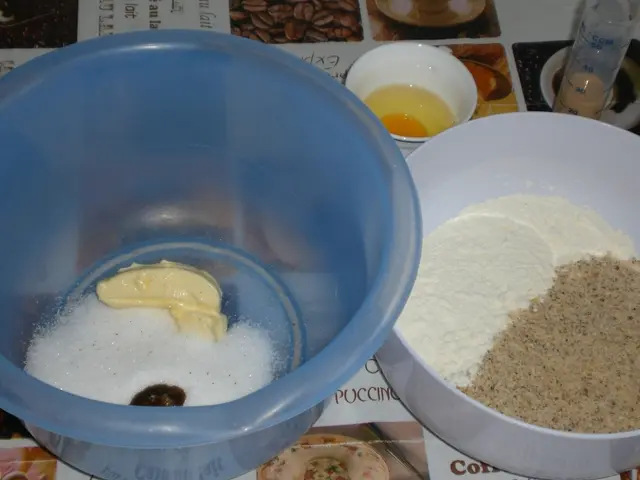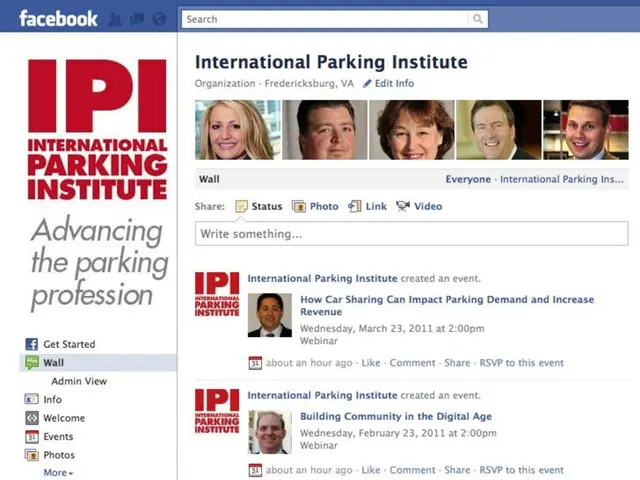Consuming Sugar Liquid Form Could Be More Harmful Than Consuming It Solid,According to Scientific Findings
Going Sugary the Wrong Way: It's Not Just About the Amount, It's About the Form
For decades, the health community has been on the attack against sugar, portraying it as a universal villain. However, a groundbreaking study from Brigham Young University and several German institutions suggests that the sugar story isn't as black and white as we thought. It seems that the real culprit might not be sugar itself but the manner in which we consume it.
The research, published in Advances in Nutrition, is the largest and most comprehensive study to date on the relationship between different sugar sources and type 2 diabetes risk. The scientists pooled data from 29 cohort studies across the globe, examining the diets of over 800,000 individuals and tracking who went on to develop type 2 diabetes.
The study discovered a striking pattern: sugars consumed as liquids, such as sodas, energy drinks, and even fruit juices, are consistently linked to a higher risk of type 2 diabetes. Meanwhile, sugars ingested as solids, including ordinary table sugar, may not pose any such danger. In fact, they might even offer a slight protective effect.
"This is the first study to draw clear dose-response relationships between different sugar sources and type 2 diabetes risk," said lead author Karen Della Corte, a nutritional science professor at BYU. "It emphasizes why drinking your sugar - whether from soda or juice - is more harmful for your health than eating it."
The Impact of Chugging Sugar
By applying dose-response meta-analysis, the researchers found that each additional 12-ounce serving of sugary beverages per day increased the relative risk of type 2 diabetes by 25%. One daily soda raised the odds, and even fruit juice wasn't much better: each 8-ounce serving increased risk by 5%. The risks were "moderate certainty," according to the study's rigorous grading system.
These findings held true even after accounting for key lifestyle factors, such as body weight, calorie intake, physical activity, smoking, and more. "These associations persisted even after adjusting for body mass index and energy intake," the authors wrote, indicating that the sugar itself may have a unique negative impact on the body, particularly when ingested in liquid form.
A Sweet Surprise: Solid Sugars May not Be the Monster You Think
If sugary drinks are the enemy, what about sugars in other forms? According to the study, it seems that context is crucial.
When participants consumed 20 grams of total sugar a day - roughly five teaspoons - as part of solid foods, their risk of diabetes actually declined slightly (by about 4%). This was true for sucrose, the kind of sugar found in many baked goods and added to cereal.
These inverse associations surprised the researchers. "Our results do not support the common assumption that dietary sugar intake, irrespective of type and amount, is consistently associated with an increased risk of type 2 diabetes," the authors wrote. Instead, it appears that the food source in which sugars are consumed is also a significant factor.
The Culprit: Liquid Sugar Overload
The difference likely lies in how the body processes liquid sugars. Beverages like sodas and juices are rapidly absorbed, delivering a concentrated blast of glucose and fructose to the liver. This can overload the liver's metabolic pathways, promoting fat accumulation, insulin resistance, and, ultimately, diabetes.
Controlled feeding studies echo this theory. For example, consuming beverages sweetened with fructose increases liver fat and reduces insulin sensitivity, even when the total calorie intake remains the same.
Even fruit juice, often marketed as a healthy choice, falls short. While it boasts vitamins, its high sugar concentration and lack of fiber mean that it behaves metabolically more like soda than whole fruit. "It's a poor substitute for whole fruits," the authors wrote.
Dietary Guidelines: Sweet Adjustments
Health organizations like the World Health Organization and the American Heart Association have recommended limiting all added sugars. However, the BYU-led team suggests that these guidelines may need to be refined. Rather than imposing blanket restrictions on all sugars, future recommendations could target liquid sugar more precisely.
According to the study, there is no safe threshold for sugary drinks - the risk begins to rise from the first sip.
"Our findings suggest the importance of considering the source and form of sugar in dietary recommendations," Della Corte said. "Rather than condemning all added sugars, future dietary guidelines might consider the differential effects of sugar based on its source and form."
This doesn't mean that added sugars in food are now off the hook. However, it highlights the need for a more nuanced view - one that differentiates between drinking a soda and enjoying a bowl of oatmeal with a teaspoon of brown sugar.
Sugary drinks may be the real villain when it comes to type 2 diabetes. The next time you reach for a sugary beverage, remember: it's the form your sugar takes that may be just as important as the amount you consume. Stay informed and choose wisely!
diabetes, sugar
Enrichment Data:
LIQUID SUGAR CONSUMPTION:- Increases the risk of type 2 diabetes- Absorbed quickly, leading to rapid blood sugar spikes- Overloads the liver and increases insulin resistance- Lacks beneficial components to slow down digestion
SOLID SUGAR CONSUMPTION:- May not increase the risk of type 2 diabetes- Consumed as part of nutrient-dense foods like fruits, yogurt, and whole grains may be well-tolerated by the liver- Contains beneficial nutrients like fiber, proteins, and healthy fats that slow down sugar absorption- Moderate intake may not be harmful
FOOD SOURCE MATTERS:The food source in which sugars are consumed is also a significant factor. When sugars are consumed as part of nutrient-dense foods, they may not overwhelm the liver or spike insulin in the same way as liquid sugars. Fiber, fat, and protein in those foods slow down the absorption of sugar and mitigate its metabolic effects.
- The groundbreaking research by Brigham Young University and German institutions suggests that the form of sugar consumption may be more crucial in relation to health than the amount.
- The study, published in Advances in Nutrition, discovered a consistent link between sugars consumed as liquids, such as sodas, energy drinks, and fruit juices, and a higher risk of type 2 diabetes.
- Solid sugars, like ordinary table sugar, might not pose the same risk, and they might even offer a slight protective effect, according to the research.
- For the future of health and wellness, dietary guidelines might need to consider the differential effects of sugar based on its source and form, as opposed to imposing blanket restrictions on all added sugars.
- Fitness and exercise, in combination with proper nutrition, can help manage chronic diseases like type 2 diabetes by promoting overall health and wellness.
- Tech and science, through research and medical-condition tracking, play a significant role in our understanding of the impact of sugar consumption on health, helping us make informed choices for a healthier future.







